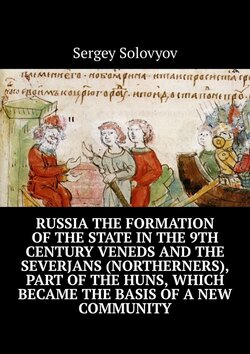Читать книгу Russia the formation of the state in the 9th century Veneds and the severjans (northerners), part of the Huns, which became the basis of a new community - Сергей Соловьёв - Страница 28
Migration of Indo-Europeans to the West, East and South
Three paths of the Indo-Europeans – West, East, and South
Iran
ОглавлениеIt must be remembered that “Aryans” is a self-name and scientific designation only for Indo-Iranian peoples. Arians (Avest. Airya-, Old-Ind. Ā́rya-, Old Persian ariya-) or Aryans (also Indo-Iranians) – the name of the peoples speaking the languages of the Aryan (Indo-Iranian) group of the Indo-European family, derived from the self-name of the historical peoples of the Ancient Iran and Ancient India (II – I millennium BC). The linguistic and cultural affinity of these peoples makes researchers assume the existence of an original Pra-Aryan community (ancient Aryans), the descendants of which are the historical and modern Iranian and Indo-Aryan peoples.
But, as you can see, the Aryans are at some distance from the Andronovites-gans (gants). Those who came to China, India, and reached Europe. Toponymy with word formation from the ethnonym Aryan in Europe is vanishingly small, as is the mention of the Aryans in the form of forefathers, ancestor spirits. In Europe, in the form of forefathers, spirits, only manna and huns are present.
In linguistics, the Aryans (or Indo-Iranians) mean only two groups of Indo-Europeans: all peoples speaking the languages of the Indo-Aryan group, and all Iranian-speaking peoples. The ancestral home of the Aryans, according to some assumptions, was located between the Dniester and Ural rivers (Yamnaya culture).
The Iranian group of peoples includes modern Ossetians, Persians, Tajiks, Afghans, Kurds, Baluchis and some other peoples. All of them speak languages derived from the common Iranian language-base, which in the II millennium BC. spoke the Iranian Aryans.
At the end of the 2nd millennium BC. the Iranian community split into two groups of tribes. Northern Iranians included the ancestors of the Scythians, Sogdians, Bactrians, Khorezmians. The southern group of tribes included the ancestors of the Medes, Persians, Kurds, Baluchis, and other Iranian peoples. This group of tribes can be called southern because they left the European ancestral home to the south and occupied the Iranian Highlands, that is, the territory of the modern states of Iran and Afghanistan. But the northern Iranians also went far beyond the boundaries of the Aryan ancestral home. The Bactrians, Sogdians, Khorezmians advanced to Central Asia.
Vedic literature is characterized by the use of ārya- as a common ethnonym for all Aryan tribes who professed the Vedic religion and opposed to anārya- “non-Aryan”, dasyu-, dasa “enemies-aborigines” (das), mleccha- “barbarian”. In the meaning of “noble”, he united three “twice-born” varnas (brahmanas, kshatriyas and vaisyas), opposed to the sudras as varna of non-Aryan origin. In the meaning of “people” they designated mainly the vaisyas (that is, “common people”) in contrast to the brahmanas and kshatriyas.
In the Rig Veda, the ethnonym is mentioned 36 times in 34 hymns. The Aryan world in the Rig Veda includes primarily Sapta Sindhavaḥ (Semirechye, Punjab rivers) and unites 5 large tribes: Anu, Druhyu, Yadu, Turvaśa and Pūru. In the era of the later Vedas, the center of the Indo-Aryans shifted to the east, to present-day Haryana, where the Bhārata tribe rises. The meaning of the word ārya- is increasingly associated with the Vedic religious cult, the concept of vratya- (“apostates”) appears – groups of people of Aryan origin who do not adhere to all the precepts of the Vedas. The tribal names will then be extremely important in the future. And here is the union of SEVEN tribes, no more and no less. Anu, Druhyu, Yadu, Turvaśa and Pūru. Also mentioned are the Bharat and Tritsu tribes. Perhaps this is all seven tribes. Yadu, Yada is also mentioned much later, in Chinese sources, both Hephthalite Huns and Sakas were called so.
